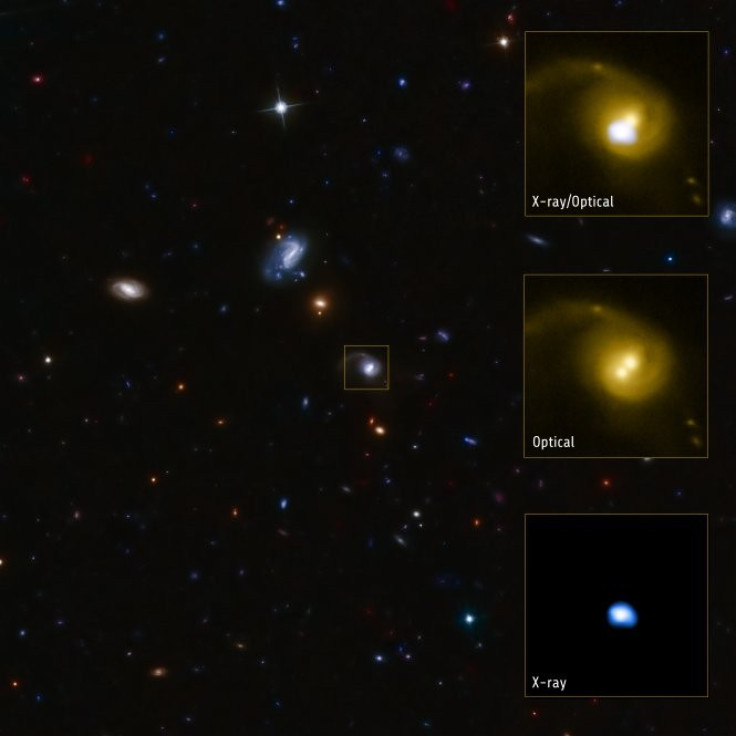Supermassive Black Hole Got Kicked Out of Its Host Galaxy, Says Nasa

Astronomers have found stunning evidence about a black hole that was kicked out of its host galaxy at a speed of several million miles per hour. They discovered this with Nasa's Chandra X-ray Observatory, according to Nasa reports.
Nasa scientists have discovered a huge massive black hole weighing millions of times the mass of the sun was kicked out of its host galaxy, CID-42. They believe that the host galaxy could have two or three black holes that would have collided and merged into a single black hole. This immense power obtained by the black hole could have allowed it to eject itself from the galaxy.
"It's hard to believe that a supermassive black hole weighing millions of times the mass of the sun could be moved at all, let alone kicked out of a galaxy at enormous speed," said Francesca Civano of the Harvard-Smithsonian Center for Astrophysics (CfA), in a statement. "But these new data support the idea that gravitational waves - ripples in the fabric of space first predicted by Albert Einstein but never detected directly - can exert an extremely powerful force."
Scientists discovered this when they were studying CID-42 galaxy, which is four billion light years away from earth. They found that a super massive black hole was ejected at an enormous speed.
Earlier, Nasa scientists had discovered a bright X-ray source likely caused by super-heated material around one or more supermassive black holes. However, they could not distinguish whether the X-rays came from one or both of the optical sources because Chandra was not pointed directly at CID-42, giving an X-ray source that was less sharp than usual.
"The previous data told us that there was something special going on, but we couldn't tell if there were two black holes or just one," said Martin Elvis, astronomer at the CfA. "We needed new X-ray data to separate the sources."
The data obtained by Nasa's Chandra X-ray Observatory revealed that the mysterious X-rays were spewing out from that galaxy itself. The team claims that when two galaxies collided, the supermassive black holes in the centre of each galaxy also collided.
The two black holes then merged to form a single black hole that recoiled from gravitational waves produced by the collision, which gave the newly merged black hole a sufficiently large kick for it to eventually escape from the galaxy.
Probably this is the reason many giant black holes are roaming undetected out in the vast spaces between galaxies.
"These black holes would be invisible to us because they have consumed all of the gas surrounding them after being thrown out of their home galaxy," said Laura Blecha, astronomer at the CfA, in a statement.
© Copyright IBTimes 2024. All rights reserved.





